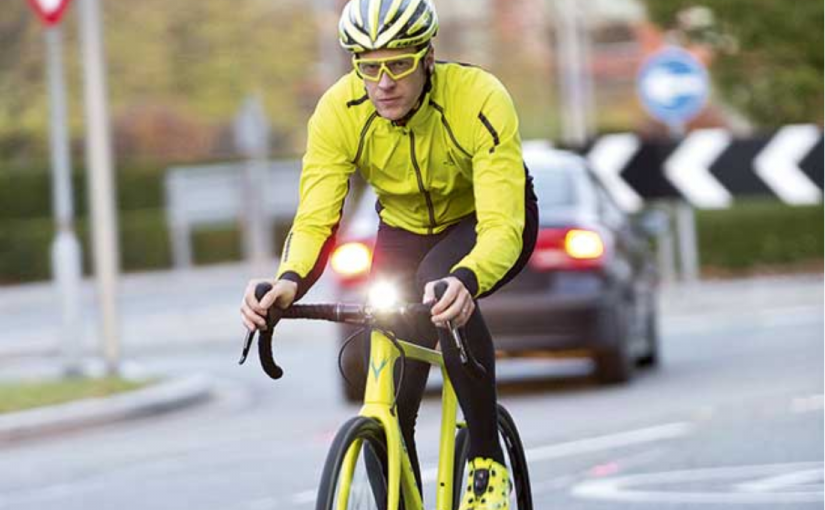Roads minister suggests making bright kit mandatory for cyclists in Britain, but what’s the evidence to back up the claim that this could help increase safety?
For several seasons now hi-vis has been fashionable for bike wear. But last month roads minister Jesse Norman suggested that the government’s wide-ranging review of cycle safety would consider if cyclists should be compelled to wear high-visibility clothing if there was evidence for it.
What evidence is there that supports wearing hi-vis clothing?
There’s not a huge body of evidence but there was a Danish randomized trial involving 6,793 cyclists, published in scientific journal Safety Science in August this year.
It found a 47 percent reduction in incidents involving other road users where the cyclist was injured when cyclists were wearing a hi-vis jacket with reflective tapes.
So, does hi-vis clothing work?
It’s not quite that simple. The limitation of hi-vis clothing is that fluorescent colors work by converting UV light in sunlight to something we can see so they’re bright in daylight, but street lights and headlights do not give off much UV light, so it makes little difference in darker conditions.
A 2006 review by health network Cochrane of 42 studies found that drivers were more likely to see pedestrians and cyclists in fluorescent clothing during the day.
It also said that the use of lights or reflective clothing improves cyclists being seen at night.
More recently, in 2010, a study in the Journal of the Australasian College of Road Safety detailed a series of controlled experiments with cyclists in different clothing to see which was most recognizable to drivers at night.
It found only two percent of drivers recognized cyclists in black clothing; this rose to 15 percent for those in a hi-vis vest but reached 90 percent for cyclists in a reflective vest and ankle and knee reflectors – the movement of the cyclists’ legs aids being seen.
However, Cherry Allan, campaigns and policy coordinator at British organisation Cycling UK, points out: “The research suggests that it may help drivers to spot pedestrians and cyclists more readily, but there was no evidence by how much and it was impossible to say whether that made them safer, as spotting them was one thing and driving safely around them another.”
What else can be done?
A 2013 Danish study in Accident Analysis & Prevention found cyclists who use flashing daytime lights had 47 percent fewer collisions with other road users, so running them seems a good idea.
It is also perhaps instructive to heed the results of a 2017 study in the same journal that found drivers who are cyclists tend to be better at spotting cyclists, so perhaps training is the answer.
Dr. Graham Hole, senior lecturer in psychology at the University of Sussex says: “Those who advocate hi-vis clothing think of it in terms of cyclists being small and therefore hard to see but the real problem is when someone pulls out in front of a cyclist.
“Under those sort of conditions cyclists are very large on the retina of the person who is pulling out. It’s not that the person is hard to see in terms of physical characteristics, it’s that people are not expecting to see them.”
